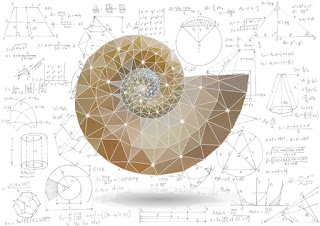Desma Week 6 Blog

This week's lecture touched on a number of different topics including physical and genetic manipulation of the human body for artistic purposes. This idea rings true in Oron Catts and Ionat Zurr's Victimless Leather (depicted to the right), which is a work of art in which cells are not only living, but they are also multiplying. In fact, they were producing at such a rapid rate that the machine would barely hold all of the newborn cells. This is but one example of how Biotechnology can double as art. There is so much beauty behind science that people often forget about the art behind the innovation.
 Another thing that was brought up in lecture was the issue of genetic mutation. Now, this is cause for great concern when it comes to the ethics behind genetic mutation. In my opinion, we need to be very careful about how we allocate genetic mutation, because if we are not careful, we will end up creating a new race of beautiful, more intelligent, and not to mention rich young children. Because after all, the only income brackets that would be able to afford this technology would be the rich. According to this BBC article, "designer babies were no longer HG Wells territory." We now have the ability to create beautiful, intelligent, and disease-free babies. As exciting as this may sound, we need to be very careful with this technology. If not, we will see an overwhelming majority of the population without access to this technology, and in turn upset about the unfair advantage being given to the wealthier society that can afford to implement and fund these technologies.
Another thing that was brought up in lecture was the issue of genetic mutation. Now, this is cause for great concern when it comes to the ethics behind genetic mutation. In my opinion, we need to be very careful about how we allocate genetic mutation, because if we are not careful, we will end up creating a new race of beautiful, more intelligent, and not to mention rich young children. Because after all, the only income brackets that would be able to afford this technology would be the rich. According to this BBC article, "designer babies were no longer HG Wells territory." We now have the ability to create beautiful, intelligent, and disease-free babies. As exciting as this may sound, we need to be very careful with this technology. If not, we will see an overwhelming majority of the population without access to this technology, and in turn upset about the unfair advantage being given to the wealthier society that can afford to implement and fund these technologies.
In 1999, an Enlgish artist names Heath Bunting created a project entitled "Natural Reality SuperWeed Kit 1.0," in which he attempted to highlight the effects of biotechnology on things like agriculture. This project of his was a DIY kit which he considered a biological weapon "capable of destroying genetically modified and conventional crops." This was his way of threatening the corporate biotech companies. In a sense, Bunting is mostly worried about the dangers of humans becoming too dependent upon this biotechnology. This is something that I think is very important. Although we have the technology to do all of these things to genetically modify life, we need to be very careful about how we are using this technology. Some of the negative effects we are already experiencing are things like "superpesticides" which are pesticides that have mutated in response to old pesticides, and are now immune to all pesticides that we have created. The same argument might be made about cancer and some other serious health issues that have formed in the last 25 years in response to all the antibiotics that pharmaceutical companies have been telling us to take for years. Sure, technology is a great thing, but we need to be extremely careful that we do not get too carried away.
References:
Miranda, Carolina A. "Weird Science: Biotechnology as Art Form." ARTnews. N.p., 18 Mar. 2013. Web. 14 May 2017.
Gallagher, James. "'Designer Babies' Debate Should Start, Scientists Say - BBC News." BBC News. N.p., 19 Jan. 2015. Web. 14 May 2017.
Gkoutziouli, Katerina. "Art and Biotechnology: When Art Looks into Science." Therestisart.wordpress.com. N.p., 26 Oct. 2010. Web. 14 May 2017.
Wilson, Stephen. "Art and Science Now: How scientific research and technological innovation are becoming key to 21st century aesthetics." London, England: Thames and Hudson, 2012. N.d. Web. 14 May 2017.
"National Institute of Environmental Health Sciences." Pesticides. N.p., n.d. Web. 14 May 2017





Comments
Post a Comment